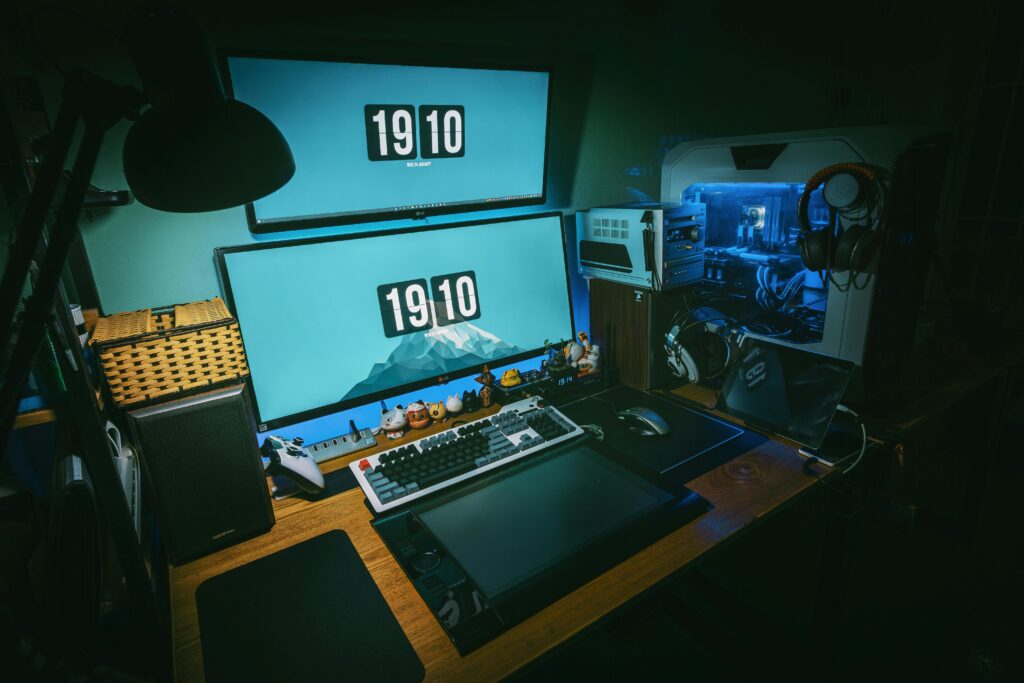In recent years, the gaming industry has undergone a seismic shift with the rise of cloud gaming. But what exactly is cloud gaming, and why is it being hailed as the future of the gaming world? In this blog, we’ll dive deep into what cloud gaming is, how it works, and why it’s rapidly gaining popularity among gamers worldwide.
Table of Contents
Understanding Cloud Gaming
At its core, cloud gaming allows players to stream video games from remote servers over the internet, eliminating the need for high-end gaming consoles or PCs. In a traditional gaming setup, games are downloaded and run locally on a device like a console or a computer. With cloud gaming, all of the heavy lifting is done remotely, and the game is streamed in real-time to your device, whether it’s a smartphone, tablet, or even a smart TV.
In simple terms, cloud gaming is to video games what Netflix is to movies. Instead of purchasing, downloading, and installing a game, you can stream it directly from the cloud, provided you have a stable internet connection.
Read Also : Top 8 Best Racing Games
How Does Cloud Gaming Work?
Cloud gaming operates through powerful servers that host and run the game. These servers are typically owned by cloud gaming platforms like Google Stadia, Xbox Cloud Gaming (formerly Project xCloud), Nvidia GeForce Now, or PlayStation Now. Here’s a basic breakdown of how it works:
- Remote Servers: The actual game is stored and processed on remote servers in data centers. These servers do all the computational work required to run the game.
- Internet Connection: A high-speed, low-latency internet connection is essential for seamless cloud gaming. The game’s visuals, audio, and commands are transmitted in real-time between the server and the player’s device.
- Client Device: The game is streamed to the player’s device (PC, smartphone, smart TV, or console) as a video feed. The player uses their controller or keyboard to send commands back to the server, and the server processes these inputs and sends back the updated video feed.
Because cloud gaming relies on powerful remote servers, it frees players from needing high-end gaming hardware. This means that even people with lower-spec devices can enjoy graphically intensive games without any lag or frame rate drops, provided their internet connection is strong.
The Benefits of Cloud Gaming
Now that you know how cloud gaming works, let’s talk about why it’s rapidly gaining popularity. Here are some key benefits:
- No Need for Expensive Hardware: One of the most significant advantages of cloud gaming is that you don’t need to invest in expensive consoles or high-end PCs. All the processing happens on remote servers, so your device just needs to handle the video stream and inputs.
- Cross-Platform Play: With cloud gaming, you can play your favorite games on virtually any device. Whether you’re on a laptop, smartphone, or tablet, as long as you have access to the internet, you can jump right into the action.
- Instant Access to Games: Forget long download times and waiting for game updates. With cloud gaming, you can instantly access a game library and start playing immediately, no matter where you are.
- Play Anywhere, Anytime: Since the game is hosted in the cloud, you can pick up right where you left off on any device. You could start playing on your PC, continue on your phone while commuting, and finish up on your smart TV at home.
- Reduced Game Piracy: Because the game files never exist on the user’s device, piracy is much more difficult. This offers an added layer of security for game developers and publishers.
- Enhanced Gaming Experience: Cloud gaming services are continuously updated with new features, better graphics, and faster processing times without requiring users to upgrade their hardware.
Challenges Facing Cloud Gaming
Despite its many benefits, cloud gaming is not without its challenges. Here are a few issues that could hinder its widespread adoption:
- Internet Requirements: The most significant barrier to cloud gaming is the need for a high-speed, low-latency internet connection. In areas with slow or unreliable internet, the gaming experience can be affected by lag, buffering, and poor video quality.
- Data Caps: Streaming games can consume a lot of data, making it a challenge for users with limited data plans. For those who don’t have access to unlimited data, the cost of cloud gaming could be prohibitive.
- Game Ownership: In a cloud gaming model, players don’t technically own the games. They are essentially renting access, and if a game is removed from the service or if the platform shuts down, the player could lose access to their favorite titles.
- Latency: For competitive gaming, even the slightest delay can affect the experience. While cloud gaming platforms have made strides in reducing latency, some games may still feel less responsive compared to playing on a local device.
Popular Cloud Gaming Platforms
Several major platforms have entered the cloud gaming market, each offering a unique experience. Here are a few of the top contenders:
- Google Stadia: Launched in 2019, Stadia is a cloud-based service that allows users to play video games without needing a console. With a growing library of games, Stadia promises high-quality performance on a range of devices.
- Xbox Cloud Gaming: As part of the Xbox Game Pass Ultimate subscription, Xbox Cloud Gaming offers a wide selection of games that can be played on mobile devices and PCs, allowing gamers to play anywhere.
- Nvidia GeForce Now: Nvidia’s cloud gaming service lets you play PC games from Steam, Epic Games, and other platforms on a wide variety of devices, providing flexibility and convenience.
- PlayStation Now: Sony’s cloud gaming service offers access to a massive library of PlayStation games, which can be streamed to PCs and PlayStation consoles.
Conclusion
Cloud gaming is transforming the gaming landscape by making high-quality gaming more accessible and convenient than ever before. While challenges remain, especially regarding internet requirements and data consumption, the potential benefits of cloud gaming make it a trend that is likely to shape the future of gaming. With continuous advancements in technology and infrastructure, cloud gaming is poised to become the standard for gamers worldwide.
Whether you’re a casual player or a dedicated gamer, cloud gaming opens up a world of possibilities, allowing you to play your favorite games on almost any device, anywhere in the world. As cloud gaming platforms continue to evolve, it’s clear that the future of gaming is in the cloud.













